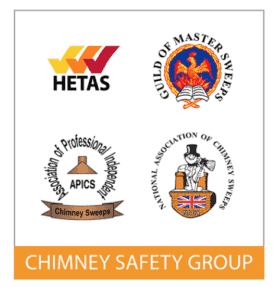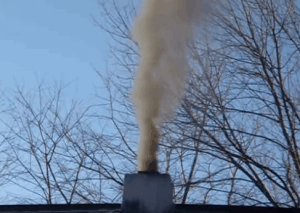 Organisations responsible for the safety and maintenance of chimneys and flues have joined forces to form the Chimney Safety Group. The purpose of the group is to promote and provide solutions to chimney related problems in the UK.
Organisations responsible for the safety and maintenance of chimneys and flues have joined forces to form the Chimney Safety Group. The purpose of the group is to promote and provide solutions to chimney related problems in the UK.
Chimney Safety Group:
HETAS – Heating Equipment Testing & Approval Scheme
Guild of Master Sweeps
APICS – Association of Professional Independent Chimney Sweeps
National Association of Chimney Sweeps
The group will draw on the strengths of the independent organisations and will meet to deal with common safety concerns and support awareness initiatives such as Chimney Safety Week. The unique access of chimney sweeps will be used to influence consumer safety and awareness. This partnership of equals creates a stronger voice for educating the UK public on chimney and flue issues, with the core aim of reducing air pollution and chimney-related accidents.
Dealing With Chimney Fires:
Dealing with a chimney fire can be scary! Groups such as the Chimney Safety Group, will help educate consumers, and help them take a much more proactive approach to chimney safety. Although despite people best efforts, sometimes things can and do go wrong. The risk of a chimney fire increases when there is an excessive build up of coal soot or wood tar deposits in a chimney. When these deposits accumulate, they can heat up and eventually combust – causing a chimney fire.
 You can tell if you have a chimney fire as you will often hear a roaring noise in the chimney, especially with an open fire.
You can tell if you have a chimney fire as you will often hear a roaring noise in the chimney, especially with an open fire.
Lots of smoke will be bellowing out of the chimney, which will no doubt cause concern.
Sometimes you may even see flames coming from the top of the chimney – if this is the case, the fire would be nearing the end, having ignited lower down in the chimney and worked it’s way upwards.
What To Do:
1. Call the fire services on 999
2. Shut all the air vents and flue dampers if you have a stove. This will reduce the oxygen supply of a stove and help stop the spread of the fire.
3. Block the fire with something noncombustible if you have an open fire.
4. Ensure all furniture and flammable items are moved away from the fire.
5. Avoid pouring water on the fire.
6. Ensure the fire service can access the roof space
7. If there is a risk of the fire spreading to other parts of the roof, use a hose to wet the near by areas but not the chimney itself.
Prevention – Always Safer then Cure!
Prevention is far better than cure! You should ensure you have your chimney cleaned by a professional chimney sweep at least once a year, and every quarter if you regularly use your stove. Also try and avoid certain wood, which produces lots of tar if you are using a stove. More about wood types can be read here.
Burning seasoned wood will not stop a chimney from collecting residue. However, it will certainly reduce congestion, which will provide peace of mind between chimney sweeps, and also make a lot less mess when sweeping time arrives.








